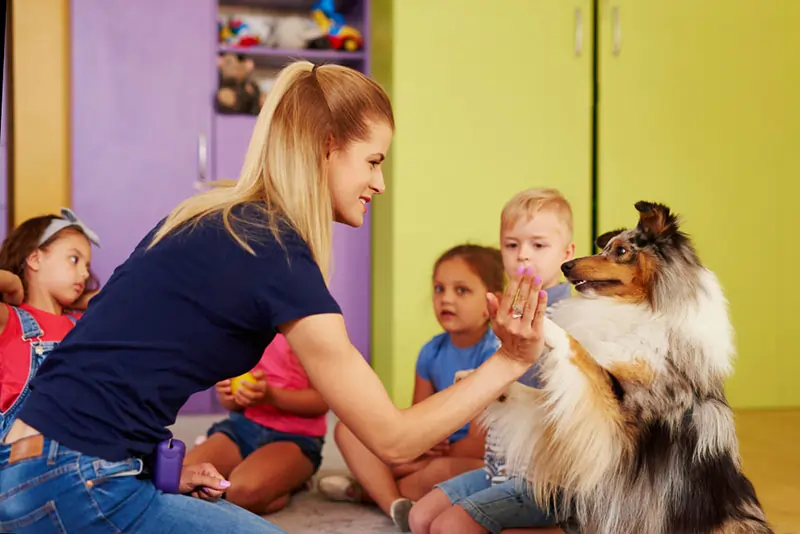How Kids and Pets Can Learn from Each Other in the Classroom

Introduction:
In today’s modern classrooms, children are constantly seeking new ways to engage in the learning process. While traditional teaching methods play a crucial role, integrating animals into the classroom can provide a unique and valuable learning experience. Pets, such as dogs and cats, can not only offer companionship but also help children develop a sense of responsibility, empathy, and compassion. By fostering positive interactions between kids and pets, both parties can learn and grow together in a mutually beneficial way.
The Benefits of Pets in the Classroom:
Responsibility and Empathy:
Having a pet in the classroom can teach children valuable lessons in responsibility and empathy. Caring for a pet requires commitment, such as feeding, grooming, and ensuring their well-being. By taking on these responsibilities, kids learn to be accountable for another living being’s needs and develop a sense of empathy towards animals.
Emotional Support:
Pets can provide emotional support to children, particularly those experiencing anxiety or stress. The presence of a friendly pet can create a calming and comforting environment, helping children focus on their studies and reducing any emotional distress they may be experiencing.
Enhanced Social Skills:
Animals can encourage social interaction among students. Pairing children with pets for activities or tasks fosters cooperation, teamwork, and communication. Children can learn to work together to care for their furry friend, teaching them valuable social skills that can be applied in various aspects of their lives.
Learning Through Animals:
Animal Behavior Studies:
Introducing pets in the classroom provides an opportunity for children to learn about animal behavior. Observing and studying the actions and reactions of animals can help children understand how different species communicate, adapt, and express emotions. This knowledge can broaden their understanding of the animal kingdom and the importance of preserving diverse ecosystems.
Reading Companions:
Reading aloud to pets, known as animal-assisted therapy, can significantly improve children’s reading skills. Pets provide a non-judgmental and supportive presence, alleviating the anxiety or pressure that some children may experience when reading in front of their peers. This practice not only boosts confidence but also enhances reading comprehension and language development.
Emotional Intelligence:
Interacting with pets can enhance emotional intelligence in children. Pets, especially those trained as therapy animals, can sense human emotions and respond accordingly. As kids learn to interpret and regulate their emotions when interacting with animals, they can develop better emotional awareness and empathy towards others.
Incorporating Pets in the Classroom:
Classroom Pets:
Introducing a pet, such as a fish, hamster, or reptile, as a classroom pet can provide a sense of companionship and responsibility for children. Educators can allocate specific tasks for students to care for the pet, such as feeding, cleaning, and ensuring their habitat is suitable. These responsibilities promote a sense of ownership and accountability while allowing kids to develop empathy towards animals.
Animal-Assisted Therapy Programs:
Partnering with local therapy animal organizations can be an excellent way to incorporate pets into the classroom. Certified therapy animals and their handlers visit the classroom, offering students the opportunity to interact and learn from these specially trained animals. These programs can be tailored to address specific educational goals, such as improving reading skills or promoting social-emotional development.
Conclusion:
When kids and pets come together in the classroom, they create a unique and enriching learning experience. The presence of animals fosters responsibility, empathy, and emotional support, while also enhancing social skills and promoting learning. By incorporating pets into educational settings, we can create a nurturing environment where both children and animals can learn, grow, and thrive together.

